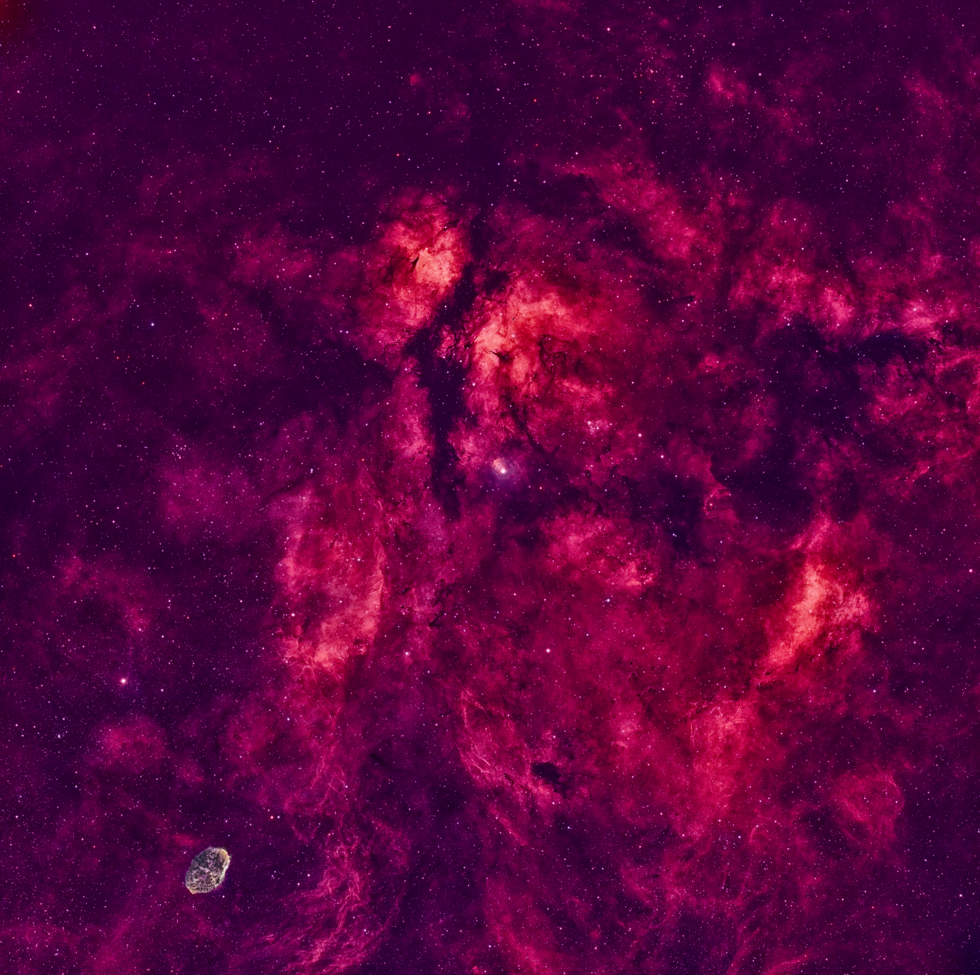Simply Red
Simply Red
This image shows the pervasive H-alpha emission of the Cygnus Milky Way, and the dark dust lanes that run through it. Stars are suppressed by the use of narrow-band SHO filters (and further, by design, in the image processing), but near the centre of the image is the naked-eye star Gamma Cyg (Sadr). The immediately surrounding nebulosity is sometimes called the Sadr Nebula, or Butterfly Nebula, or more formally, IC 1318/Sh2-108.
It is not Gamma Cyg that ionizes the hydrogen gas, however; rather, it is the diffuse radiation field (Sadr is much closer than most of the gas). This radiation doesn't contain enough higher-energy photons to ionize sulfur and oxygen significantly, so there is little colour range in the gas emission.
Rather than exaggerate the small colour range, I chose a modified HOO palette for this rendition, using red for the H-alpha emission, but keeping some colour in the wind-blown bubble NGC 6888 (at bottom left)
It is not Gamma Cyg that ionizes the hydrogen gas, however; rather, it is the diffuse radiation field (Sadr is much closer than most of the gas). This radiation doesn't contain enough higher-energy photons to ionize sulfur and oxygen significantly, so there is little colour range in the gas emission.
Rather than exaggerate the small colour range, I chose a modified HOO palette for this rendition, using red for the H-alpha emission, but keeping some colour in the wind-blown bubble NGC 6888 (at bottom left)
SPECIFICATIONS
Telescope
SPA-3
Camera
FLI PL16083
Location
IC Astronomy
Date of observation
31/7/2020
Filters
SHO, 10x300s each
Processing
PixInsight, Topaz AI, Photoshop CS6
Credits
ian howarth/Telescope Live



